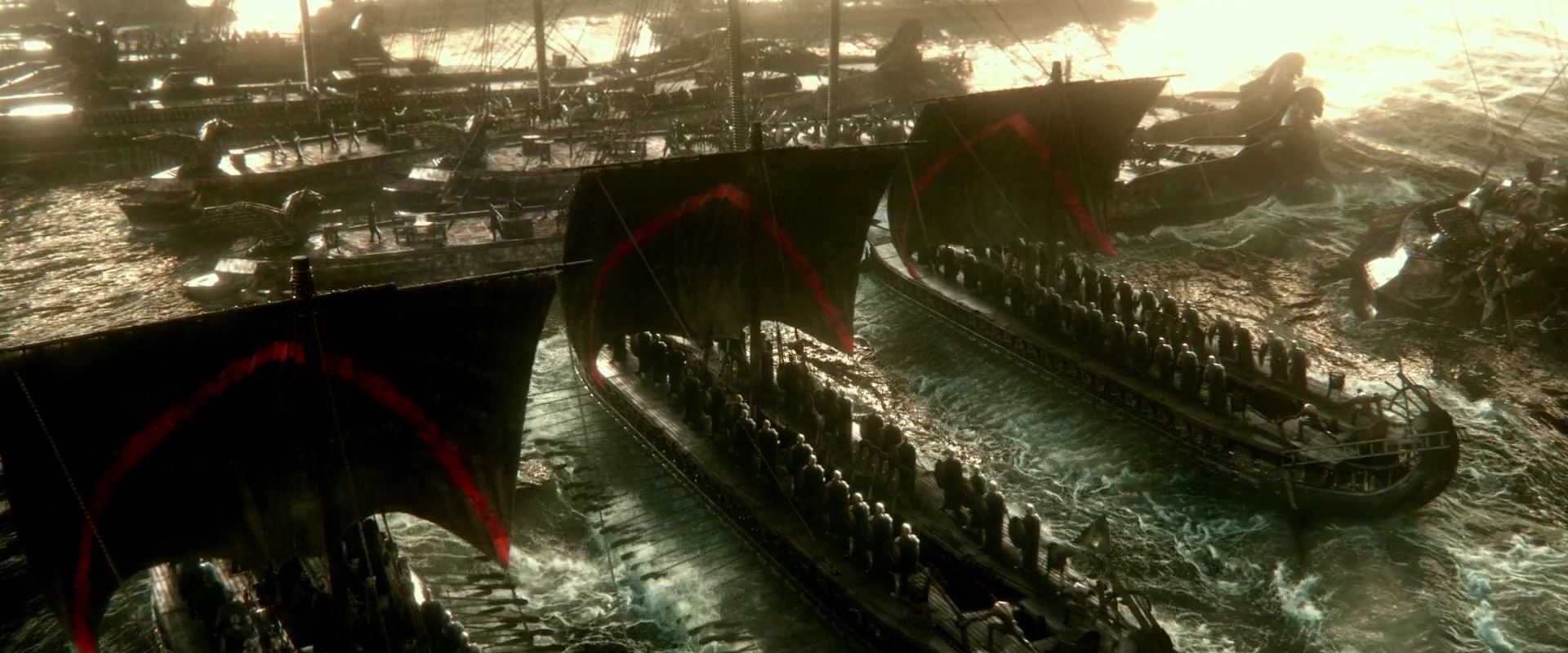We’ve talked about historically accurate nautical epics and sci-fi philosophical pontificating thus far for Fleet Week, so now lets have a bit of silly fun. The film 300 took the world by storm upon its release in 2007, breaking box office records and leaving its impression on pop culture at large and military communities in particular, who latched onto its bloody glorification of honor through battle. Since the film itself was based on a single run graphic novel, one would assume that the feature would be a one and done release. However, in the age of big budget comic book franchises, the threat of a sequel was never far off. Warner Bros. and Legendary pictures finally acted upon that threat seven years later with the release of 300: Rise of the Licans an Empire in 2014.
The movie is the epitome of the sequel that no one was asking for.
On a technical standpoint, the film is actually rather functional, with the trademark gory action and speed ramping of the original along with a fantastically hammy villain performance by the lovely Eva Green that suits such bombastic material. Unfortunately, there were leaps and bounds being made in Hollywood blockbusters (Christopher Nolan’s award winning take on the Batman mythos and the rise of the Marvel Cinematic Universe, for example) during those seven years that makes the retread of 300 territory seem trite and boring in comparison.
Whereas the original 300 tells the tale of the legendary Battle of Thermopylae, Rise of an Empire focuses on the concurrent naval battle in the Aegean sea and the beginnings of the Battle of Salamis, considered by some scholars to be one of the most important battles in history. Of course, this is an effects-heavy R-rated slasher, not a history lesson, so plenty of outlandish exaggeration is par for the course. However, Rise sets itself apart by showcasing a striking vision of how naval battles of antiquity might have played out, something rarely seen in movies.
The first battle we see is a beach invasion defense led by the Athenian general Themistocles (Sullivan Stapleton).
From there, we flash forward 10 years to the first encounter between the Athenians and the Persian emperor Xerxes’ invasion fleet led by Artemisia (Eva Green).
The ships get into striking distance of each other’s arrows and spears, trying to manage the perilously choppy seas in the process. The Greeks then maneuver straight into the broadside of the Persian ships, their boats becoming floating battering rams in the process.
In the next confrontation, the Greeks feign a retreat and the Persians give chase at full force, unaware that a deadly trap hides beyond the fog. The large Persian assault force is lured into rock formation, a choke point that causes the ships to collide with each other. In the ensuing chaos, a Greek marine assault force descends upon the stranded ships and lay waste to the Persians in bloody fashion.
Vexed by yet another defeat, Artemesia sends forth a peculiar seaborne contraption to engage her enemy.
A strange fuel barge barrels forth, spewing out oil into the sea that surrounds the Greek fleet.
Once Artemesia sets the water ablaze, her special squad of suicide bomber frogmen troops detonate their explosive payloads, demolishing much of Themistocles’ fleet in the process. As you can tell, the movie is in full cartoon territory at this point, but at sequence is clearly staged and engaging enough to be forgiven.
In the final battle set near Salamis, the two fleets deploy they boarding parties and engage in down and dirty close combat. At some point in the battle, Themistocles unleashes a horse from the cabins below and begins a one-man cavalry charge, cutting down foes as his steed jumps from ship to ship. Once again, the film has little concern for pesky details such as realism and the laws of physics, instead keeping its focus on some admittedly well choreographed sword fighting.
In the end, I still wouldn’t consider 300: Rise of the Planet of The Apes an Empire worthy of defending. It rehashes old ideas and seems to bask in the gross and problematic elements of the original, unaware of the changes in social attitudes that had occurred between the production of the two films. Nonetheless, the film offers us a fantastical look into a type of combat seldom explored in action movies, and future film makers would do well to take notes and learn from its successes and failures.








